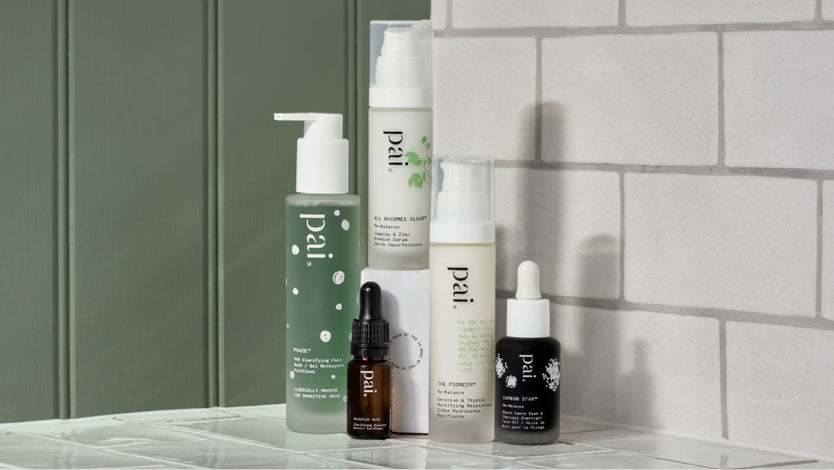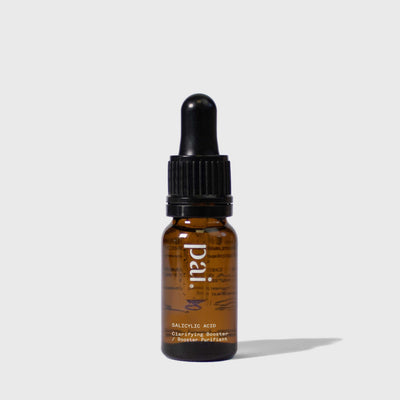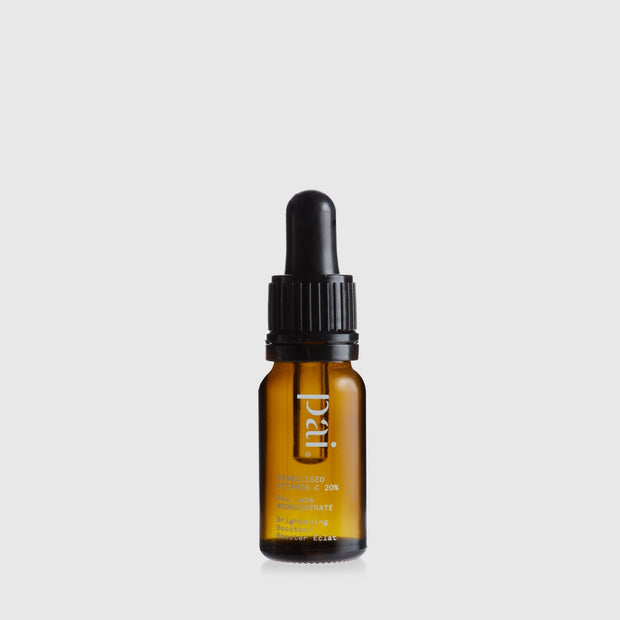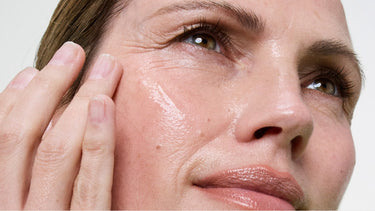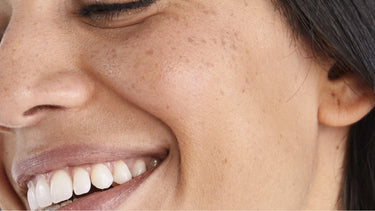There are some ingredients in skincare that are incredibly effective, but their names put many people off – often sounding too complicated or even harsh. Exfoliating acids fall into this category.
But don’t be intimidated by the name. Once you get to know exactly what these wonder ingredients do, the right ways to use them and their endless benefits for sensitive skin – you’ll be a convert too.
Keep reading for your in-depth guide to exfoliating acids for your face and body, including a few product recommendations to try out along the way…
What are acids in skincare?
‘Skincare acids’ is an umbrella term for ingredients applied topically onto your skin, usually to hydrate or to exfoliate. The most common ‘acid’ that you’ll no doubt have heard of is Hyaluronic Acid; but despite the name, this hydrating humectant is not really what we mean when we talk about acids. We mean exfoliating acids – and that’s what we’ll guide you through here.
Different types of exfoliating acids have different skin benefits, so it’s important to know which does what if you’ve got a particular skin goal in mind. They’re split into groups – known as AHAs, BHAs, and PHAs.
The key difference between the acids lies in their molecular size. Essentially, the smaller the molecule, the deeper it penetrates the skin. Where it can then work more intensely.
So, do you know the difference between AHA, BHA and PHA? Let’s get into it…
AHAs
Alpha hydroxy acids (AHAs) are typically a type of water-soluble exfoliating acid that can vary in molecular size, so will have different benefits. In general terms, they’re best for dry, dull skin types.
A widely-known AHA is Glycolic Acid, powerful because it’s the AHA with the smallest molecules. Usually naturally-derived from sugar cane, it works to exfoliate at deeper levels in skin and help even out skin tone.
Lactic and Malic Acids are examples of AHAs with larger molecule sizes. Because they don’t penetrate skin as deeply, they work by hydrating the skin's surface while also helping to shift dead skin cells. Slightly more sensitive skin-friendly, these AHAs are often a great place to start.

Then we come to Citric Acid and Tartaric Acid (don’t worry, you won’t be tested on these names at the end). Derived from foods – including lemons – like the AHAs mentioned previously, these are small molecular-sized acids, meaning they only work on the surface.
The main benefit of these is that they also act as antioxidants to fight off harmful free radicals – which in turn can lead to premature aging and skin damage. A great example you’ll probably already have in your skincare arsenal is Vitamin C (Ascorbic Acid).
As AHAs go, Mandelic Acid is the least irritating and it’s attracted to oil. This means it’ll find the oil in your skin, make-up, SPF and so on – and dissolve it. Perfect for those with oily skin and acne-prone skin.
If you want a kinder entry point to testing AHAs on your skin, try our blemish mask. Our Dinner Out Face Mask contains blemish-fighting Copaiba, oil-absorbing Kaolin Clay, barrier-bolstering Prebiotic Inulin and the star of the show – Pink Pomelo Extract (AKA your new favorite AHA). Naturally composed of citric, malic and tartaric acids, this ingredient works to slough away dead skin cells, leaving skin radiant.
BHAs
Beta hydroxy acid (BHA) is an oil-soluble exfoliating acid derived from White Willow Bark. Unlike the other acids, there’s just one type of BHA and that’s Salicylic Acid. It has a small molecular size, so can penetrate the skin at a deeper level to dissolve oil and clear up excess sebum.
Because of their ability to dig deep into the pores, BHAs are best for oily, combination and blemish-prone skin. You’ll find them in products designed to target breakouts and blackheads, as they help to clear congestion.
It can mean they’re less suitable for sensitive skin unless they’re formulated at a low dose, but at Pai we’ve found a way to make a Salicylic Acid for sensitive skin with our Clarifying Booster.

At 2% concentration, our Salicylic Acid Booster is the highest dosage available over the counter, so you’re not missing out on efficacy. Crucially, we pack our formula with sensitive skin supporting ingredients, including Organic Glycerin – a trusted moisturizer – and Organic Chamomile Water to soothe skin. There’s also Prebiotic Inulin in there to build up your skin’s resilience.
We go the extra mile to make sure it’s going to nourish – not aggravate – your skin. Along with all Pai products, it’s patch tested and clinically proven for sensitive skin; plus, the booster format means you can drop and blend it into your skincare and use as much or as little as you like.
PHAs
Last but in no way least we get to PHAs. Polyhydroxy acids are water-soluble, larger molecules that are commonly the most compatible with sensitive skin.
They work at surface level – due to their larger size – to clarify, decongest and leave skin looking brighter. The most common types of PHA you'll see on skincare labels are Gluconolactone, Galactosen and Lactobionic Acid.
If you’re looking to ease into the skincare acids game, PHAs are definitely the place to start. Our gel cleanser, Phaze, is a foaming face wash powered by PHAs. It gently exfoliates, balances the skin barrier and leaves skin hydrated long after it’s been rinsed away.
How often should you use skincare acids in your regimen?
Exfoliating acids come in many different types of products; cleansers, toners, serums, moisturizers, booster drops, face masks. The list is endless. But the general rule of thumb is to start slowly, adding a product containing exfoliating acids into your regimen once a week. Slowly increase the frequency as your skin gets used to the acid.
A wash-off product, such as a cleanser, will be a gentle way to get started – while a booster puts you in control of dosage, so you can work your way up depending on how your skin feels.

How do you use acids in your skincare regimen?
Again, it’s all up to you and how your skin responds to them. If you’d prefer to include them in your regimen daily, go for a gentle exfoliating cleanser.
If alternate nights feels more do-able, think about a leave-on Salicylic Acid serum or booster. Or, finally, if you’re looking for a more intensive treatment, try an exfoliating face mask weekly or whenever your skin feels congested.
Once you’re up and running and your skin starts to reap the benefits of skin acids, you might like to mix your AHAs, BHAs and PHAs. An exfoliating cleanser like Phaze can absolutely be used alongside our Salicylic Acid Booster and our Dinner Out Face Mask.
Phaze is designed for daily cleansing, but we don’t recommend using the Salicylic Acid Booster or face mask every day – try once or twice a week instead so you don’t overwhelm sensitive skin.
Shop our Salicylic Acid Booster now and discover our Re-Balance range for more natural products for blemish-prone skin. For more advice, book a free online skin consultation now.



























